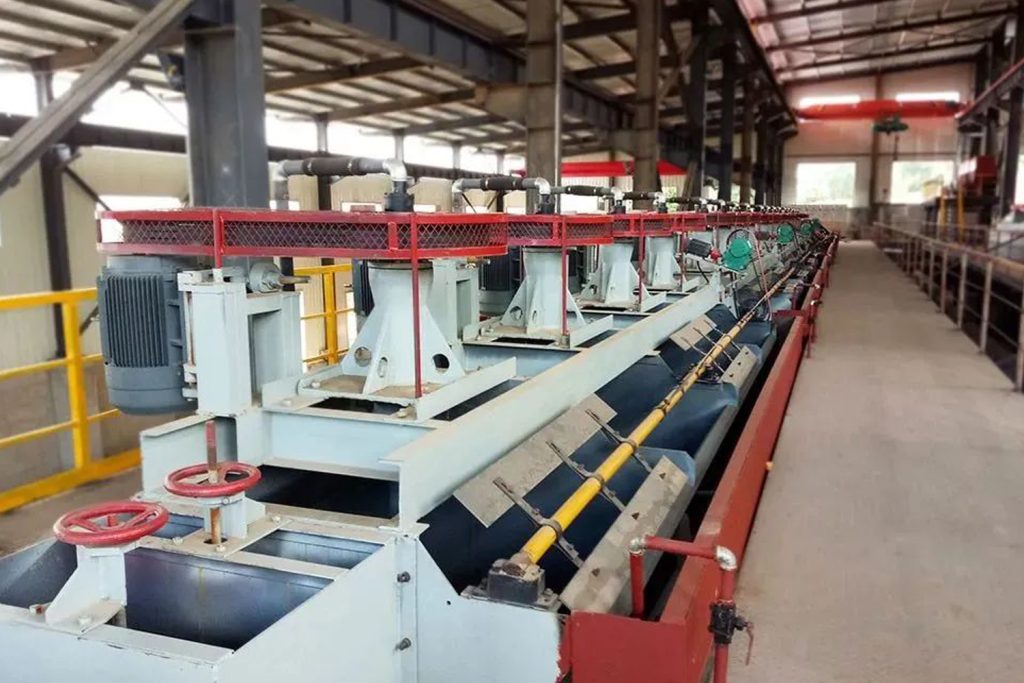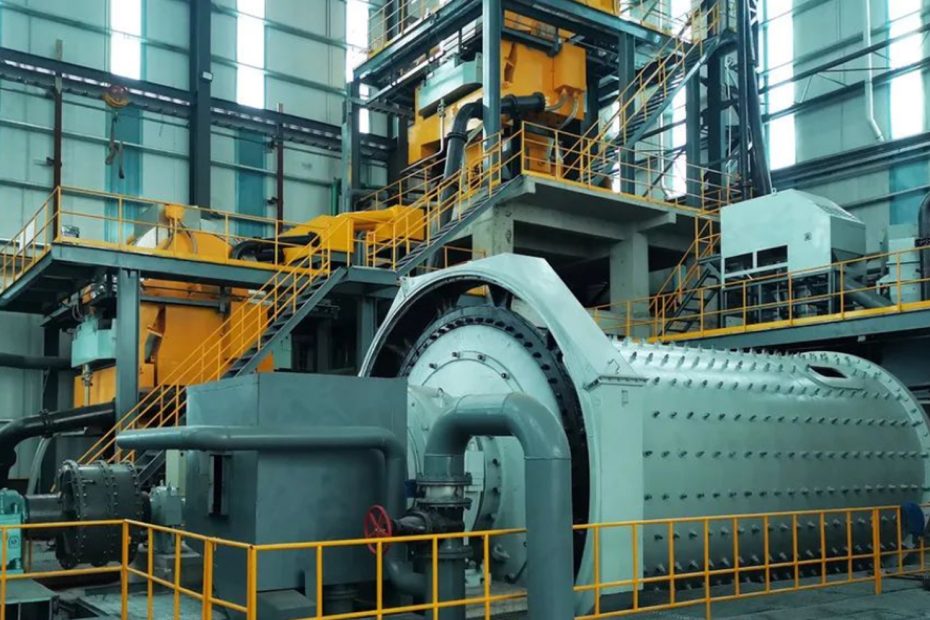Among non-ferrous metals, copper-lead-zinc polymetallic sulfide ores are an important class of minerals. In addition to minerals such as copper, lead, zinc, and sulfur, these minerals often contain precious metals such as gold, silver, and rare metals such as tungsten, molybdenum, and tin. They are important raw materials for the production of copper, lead, zinc, and other minerals.
However, due to the complexity of copper-lead-zinc sulfide ores, the mineral processing is often more complicated. In its mineral processing, grinding and flotation are two important stages. In the following, we will explore the characteristics of copper-lead-zinc sulfide ore mineral processing in terms of these two stages.
Grinding stage
The deposits of copper-lead-zinc polymetallic sulfide deposits are mostly skarn deposits or hydrothermal deposits. According to the composition of metal minerals, they can also be divided into copper-zinc deposits and copper-lead deposits. There are differences in the distribution characteristics of different metal deposits, some are dense and massive, mainly disseminated, and some are densely symbiotic, embedded with each other, and the particle size of the distribution is uneven.
Under such conditions, the purpose of ore grinding is not only to achieve the state where the dissociated particles of the monomer can be separated, but also to achieve the state where the metal mineral aggregate particles can be separated. Therefore, blindly reducing the grinding fineness will cause over-grinding of the coarse particles, and may also lead to muddying of the coarse-grained minerals and gangue minerals. But on the contrary, the grinding fineness can not reach monomer dissociation, and can not get a higher sorting index.
It can be seen that it is very important to adopt a reasonable grinding process for this type of ore. The commonly used method is segmental grinding, combining the number of grinding segments and grinding fineness with the sorting method used to obtain better sorting indicators. The grinding stage usually occupies a relatively large investment cost.
After comparing the two processes of segmental grinding-copper, lead and zinc full flotation tailings and segmental grinding-regrinding and re-election, we found that although the two processes have achieved similar flotation indicators, in terms of investment costs, the segmental grinding-copper-lead-zinc full flotation tailings is much lower than the segmental grinding-regrinding and re-election process. Therefore, we have concluded that a reasonable grinding process can not only improve the grinding index, but also have a direct impact on the economic benefits of the concentrator.

flotation stage
There are currently many options for the flotation process of copper-lead-zinc polymetallic sulfide ores, such as preferential flotation, full-mix flotation, partial mixed flotation, mixed-priority flotation, etc., and adopt different sorting processes for different ore compositions.
Priority flotation process
According to the buoyability of copper, lead, zinc and other sulfides, they are separated by flotation one by one to obtain various single concentrates and tailings. It is suitable for ores with simple composition, high grade raw ore, and large differences in buoyancy of useful minerals.
However, copper-lead-zinc polymetallic sulfide ores are usually complex, and the floatability of copper minerals is similar to that of galena, so it is difficult to separate them by preferential flotation, and it is rarely used in production practice.
Partial mixed flotation
It is a process of selecting various minerals with similar buoyancy as mixed concentrates and then separating them separately. In the separation of copper-lead-zinc polymetallic sulfide ores, it is common to mix copper minerals and lead minerals to form copper-lead mixed concentrates, and then separate copper and lead.
Mixed flotation tailings judge whether sulfur minerals need to be recovered according to their sulfur content. This process is characterized by strong process adaptability, low energy consumption, short process, and less dosage of chemicals, but it is difficult to separate copper and lead, and the products are easily mixed.
The key point is to use a combination of reagents with better selectivity to copper and lead in the mixed flotation section, to strengthen the drug removal effect of coarse concentrate, and to use a highly selective inhibitor in the separation stage.
Mixed-priority flotation process
Sorting all the sulfide minerals into the mixed concentrate, and then carrying out the process of sorting the mixed concentrate. In the production practice of copper-lead-zinc polymetallic sulfide ore, this process is rarely used because the flotation separation of its mixed concentrate is more difficult.
Equal flotation
Various minerals with similar floatability are sorted into mixed concentrates, and then multiple groups of mixed concentrates are separated by flotation. This process can effectively reduce the strong activation and inhibition of easy-floating zinc minerals, save reagents, and improve flotation indicators. However, the process length is long, the operation is complicated, and the floatable limit is difficult to grasp, so it is rarely used.
summary
The above is an introduction to the mineral processing of copper-lead-zinc polymetallic sulfide ore, which has a great influence on the overall separation in the grinding stage and flotation stage. Investing in the construction of a mineral processing plant requires multiple considerations, and the fundamental purpose is to obtain reasonable mineral processing indicators on the premise of ensuring the economic benefits of the mineral processing plant.
